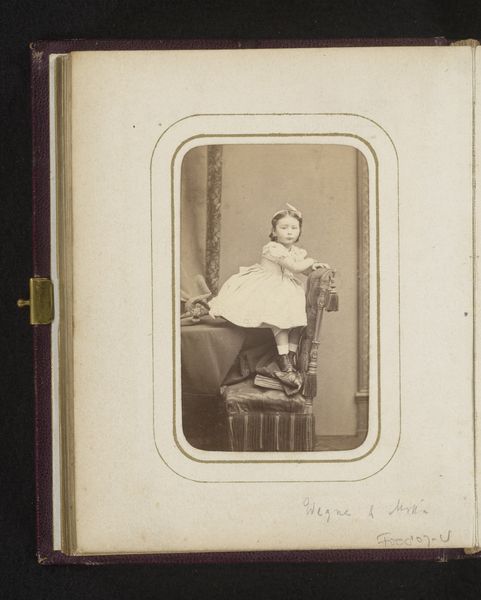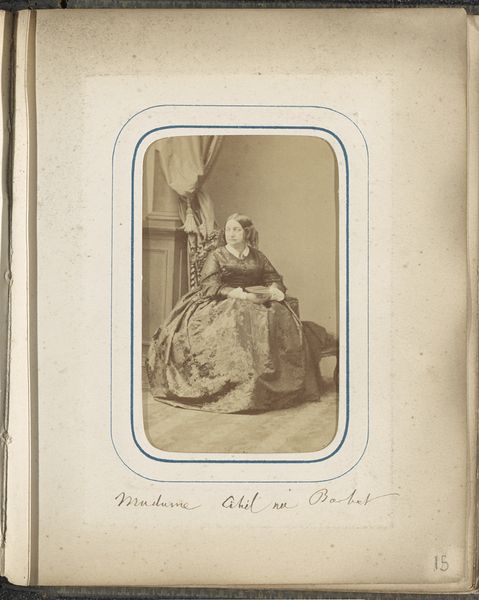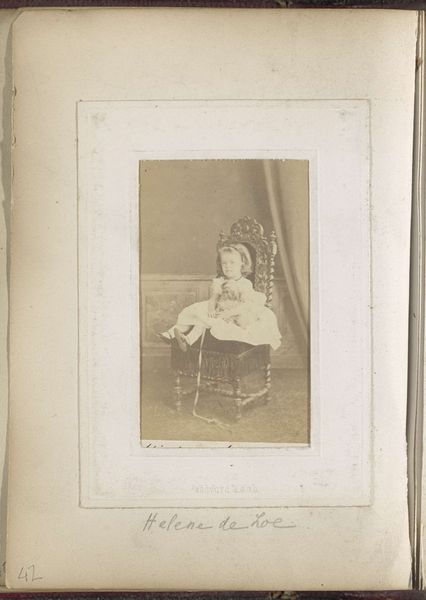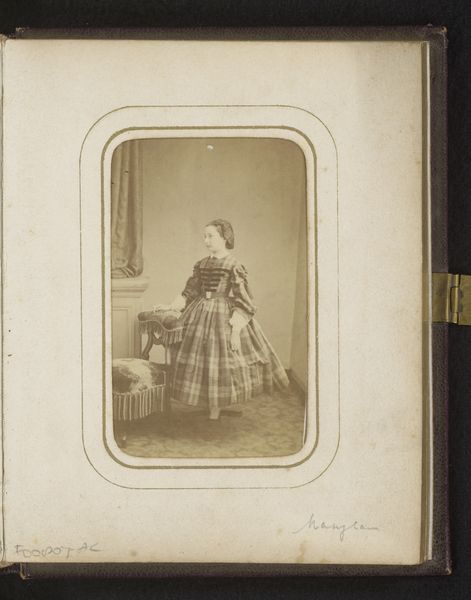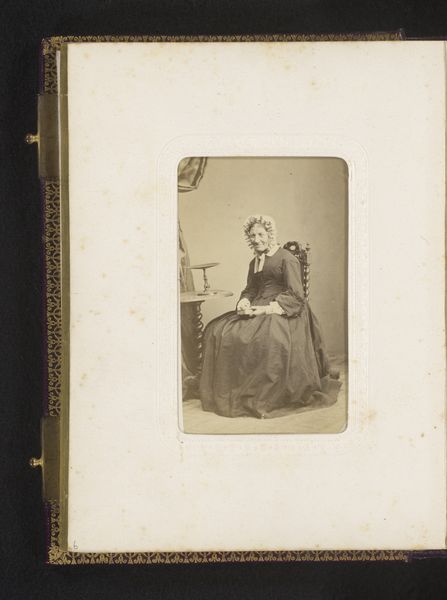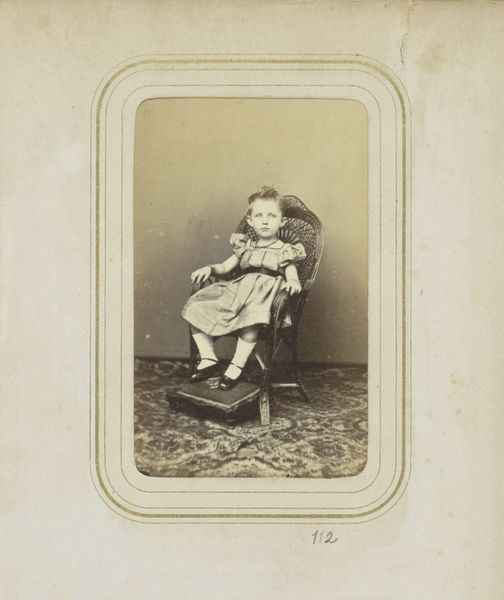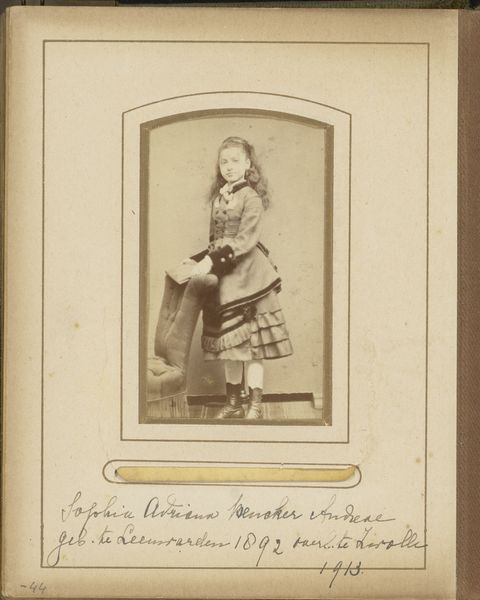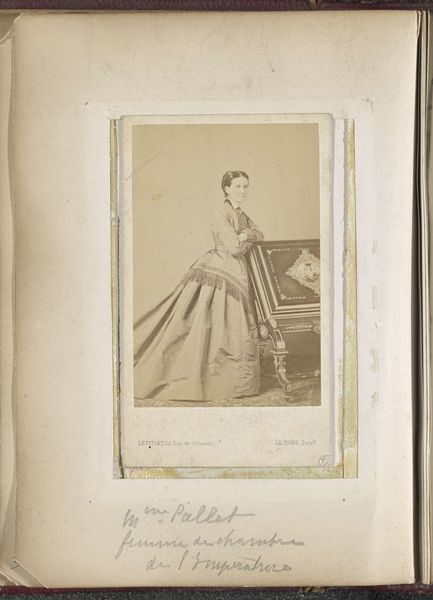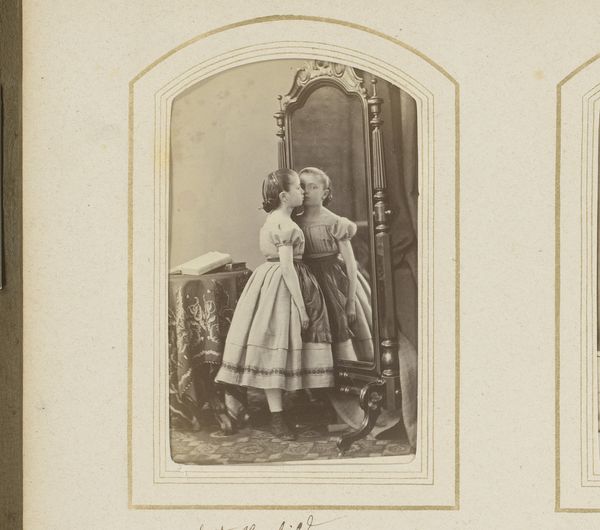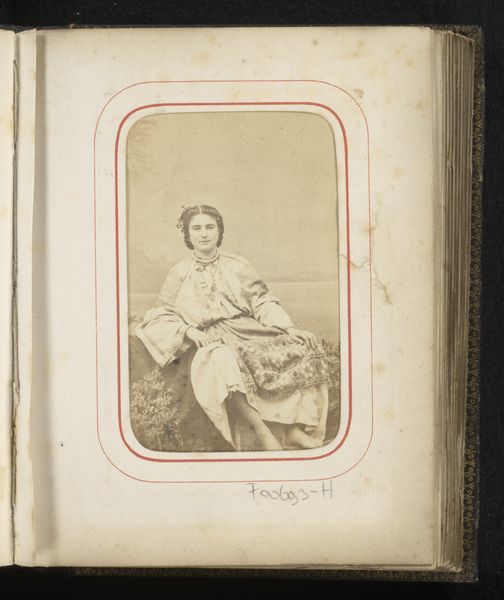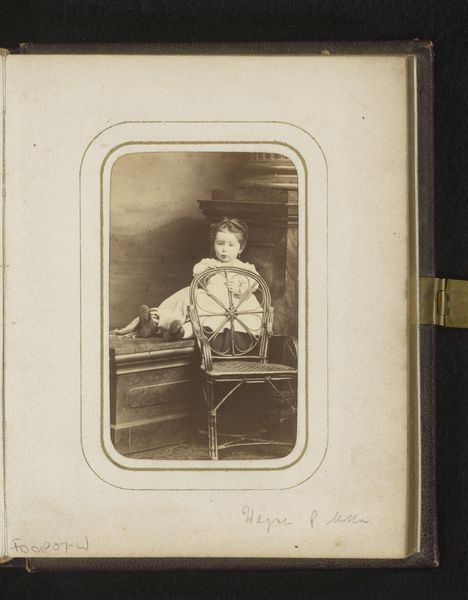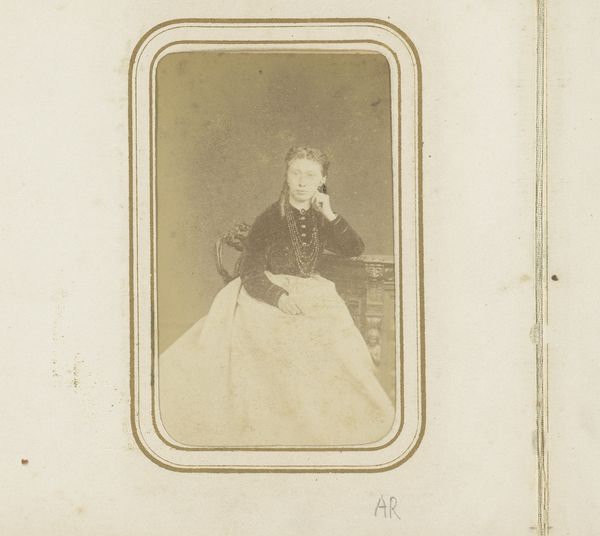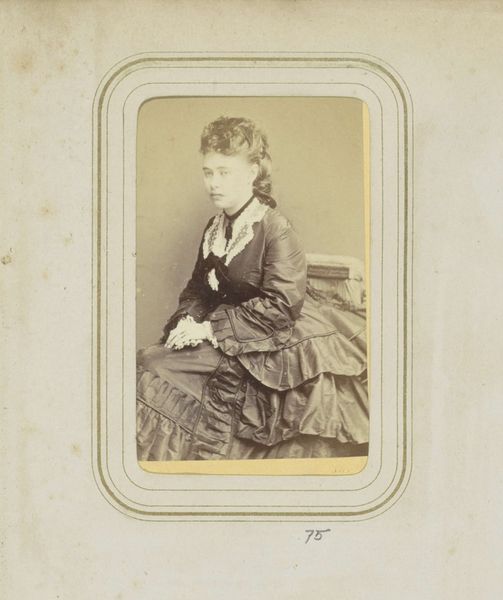
photography
#
portrait
#
water colours
#
photography
#
child
#
watercolor
Dimensions: height 77 mm, width 50 mm, height 100 mm, width 62 mm
Copyright: Rijks Museum: Open Domain
Editor: This is a portrait of Thérèsa San Arpino as a child, captured around 1860-1865 by Grillet jeune, using photography, maybe even hand-tinted watercolours. The image has such a formal feel. It makes me wonder about childhood and how it was perceived back then. What strikes you most about this piece? Curator: What jumps out at me is the staged nature of it. It’s a very deliberate construction of identity. Consider how photography was used in the mid-19th century, primarily by the upper classes. These images became tools for constructing and disseminating a very specific, often idealized, vision of family, status, and respectability. Editor: So, the choice of clothes, the chair, even the carpet – it all plays a part? Curator: Exactly! Look at the chair; it is ornate and clearly signals a certain level of affluence. The child is positioned deliberately, holding a shawl or perhaps a cloak, creating a theatrical quality. These visual cues speak volumes about how the family wanted to be perceived, not just in their social circle but potentially for posterity. It is intriguing how photographic studios helped normalize poses and props and in that way shaped collective understandings of status. Editor: That’s fascinating! So much more than just a cute picture of a little girl. It shows the performative aspect of photography, right? It served more of a purpose than documentation. Curator: Precisely. It's crucial to examine the socio-political motivations influencing what images were created, how they were circulated, and, perhaps more importantly, who had access to this powerful tool of representation. Editor: Wow, I’ll never look at old portraits the same way again. Thank you, I’m taking a lot away from this. Curator: My pleasure. Considering art in its historical context opens our eyes to its layered meanings.
Comments
No comments
Be the first to comment and join the conversation on the ultimate creative platform.
